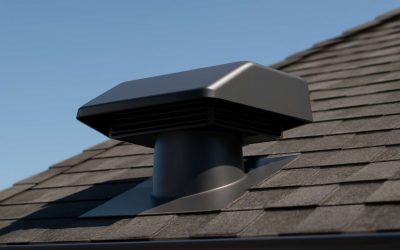
Using a ventilation fan is an excellent way to ensure that your indoor air quality is optimum. Typically, fans are made of metal, plastic, or wood and are powered. These machines are generally placed in the center of a room to allow air to flow through.
Exhaust fans vs ventilation fans
Whether you need to ventilate your home or remove odors and moisture, you should consider an exhaust fan. It is an effective way to keep your belongings safe and the air in your house healthier.
Fans come in a variety of sizes and shapes. They can hang from the ceiling, or they can mount onto the wall. There are even exhaust systems for your roof.
A ventilation fan works in the same way, but it brings fresh air into a space. Typically, it is used in kitchens and bathrooms. It is also used for fire fighting purposes.
Exhaust fans are designed to remove odors, pollutants, and moisture from the air in your home. They can also protect your attic from mold and mildew. They can be installed in both commercial and residential settings.
While both ventilators and exhaust fans can be beneficial, they have different purposes. For instance, an exhaust fan may be installed to remove smoke from industrial settings.
CFM rating
Choosing the right CFM rating for your ventilation fan is an important step to maintaining good air quality and comfort. The CFM rating, or cubic feet per minute, is a measurement of the volume of air moved in a unit of time.
While there is no universal standard, the CFM is usually measured in units of cubic feet. In order to measure the CFM, you can use an Anemometer. This device will help you determine the velocity of the air.
In order to figure out the CFM of your vent fan, you need to know the size of the room and the average duty level. Then, you can use a formula to calculate the CFM requirements for a specific room.
For example, a typical bathroom will require a fan with a 130-cfm rating. This is the equivalent of a 3-inch duct with eight air changes per hour.
The amount of air changed per hour will vary depending on the type of application. For instance, a basement may need three to four ACHs (air changes per hour). For kitchens, it may be 7-8 ACHs.
Placement of the fan
Whether you’re installing a bathroom fan or you’re planning to replace your existing central air system, you need to consider the location of the ventilation unit. The best locations to place a fan are near your shower and your toilet. If you’re not sure where to start, get the help of a professional.
A bathroom fan is a big investment, so you don’t want to cut corners. If possible, locate the unit in your attic. As for mounting it, you’ll need to extend the brackets to the joists on either side of the unit. Luckily, you’re in luck, as most home improvement companies have a handy list of joist spans.
If you’re not a do-it-yourselfer, consider hiring an expert to install the vent fan for you. He’ll be able to recommend the appropriate size and type of duct, and advise you on the most effective placement. He’ll also be able to recommend a GFCI based model, which is a must for any home with a bathroom.
Cleaning the fan
Keeping your ventilation fan clean is a good way to extend the life of your fan. If you don’t clean your fan on a regular basis, dust and buildup can collect on the inside of the fan and reduce its effectiveness. The dust can also recirculate, making it easier for germs and allergens to get into your air.
Before cleaning your ventilation fan, make sure you turn off the power to the fan and disconnect the plug from your wall. You should use a vacuum cleaner with a bristle brush attachment to clean the interior of your fan. You can also use a crevice tool to remove dirt and debris from hard to reach areas.
You can clean the vent fan by removing the cover. You may have to unscrew the screws that hold the cover in place. You can use a soft cloth to wipe the blades. You can also use a pillowcase to wrap them up. After the blades are dry, you can use a feather duster to remove any remaining dust.



0 Comments